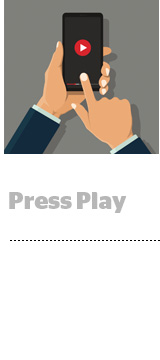
Programmatic dollars flowing to video and mobile have finally surpassed spend on desktop and banner ads.
This year, mobile made up 53% of global programmatic spend by device, while video ads accounted for 51% of programmatic spend by format, according to Magna’s Programmatic 2018 report. (Magna did not include video inventory on over-the-top devices in these numbers.)
“It’s the first time [mobile and video have] hit that more than 50% milestone, and they’re all going to be higher than that at the end of the forecast period,” said Luke Stillman, SVP of digital intelligence at Magna Global.
Programmatic spend has been slow to transition to mobile owing to the discipline’s reliance on desktop cookies, Stillman said. And while US advertisers have embraced video advertising en masse, YouTube is still the only scaled video source in many emerging markets.
“The trend is clear that banners are on the decline and are less effective inventory,” Stillman said. “It’s a relic of incumbency.”
Overall, the global programmatic market will reach $34 billion this year and grow to $60 billion by 2022. Also by 2022, programmatic will make up 71% of total banner and video transactions as non-programmatic spend shrinks by 4%, Magna predicts.
Programmatic matures
As programmatic matures across the globe, marketers are getting smarter about how they buy.
Programmatic’s global growth rate will slow this year to 22% from 25% last year as the buying method is adopted in emerging markets. Magna puts programmatic in two buckets: RTB and non-RTB, or direct deals enabled by technology. The report does not include social in its measurements.
“If you zoom out and look at a marketer’s total budget, the stuff that you can’t buy programmatically is the minority,” Stillman said.
A key value proposition of programmatic is auction-based pricing, Stillman said, which is “one of the biggest drivers of finding optimal pricing and maximizing yield as a publisher.”
But as marketers seek to protect themselves from issues like fraud and brand safety on the open exchange, they’re embracing private marketplaces (PMPs) to take advantage of auction-based pricing while knowing with whom they’re transacting.
According to Magna, RTB-based programmatic buying, which includes PMPs, will make up 63% of all programmatic spend by 2022, compared with 10% of spend flowing to non-RTB programmatic buys. That trend is consistent with eMarketer research that says PMPs will grow 21% this year to reach $13.5 billion.
“There’s an uptick in the amount of PMP transactions,” Stillman said. “Marketers are using deal IDs to add controls, pricing floors and knowledge about inventory sources without abandoning all of that valuable programmatic technology.”
Marketers are also ensuring more transparency by embracing first-price auctions, which clear up opacity around fees and pricing structures that existed in second-price auctions.
“It’s a response to some of the uncertainty in programmatic between brands and publishers,” Stillman said. “We’ve seen a huge shift from most exchanges, and we’ll see it continue.”
Another factor buoying PMPs is the growing urgency around first party data security, owing in part to regulations like GDPR. PMPs offer brands more control over audience data while still allowing them to realize improved efficiencies and serve more tailored experiences.
In the long run, however, Stillman believes open exchanges will carry on.
“We’re kind of at this standstill between these things,” he said, “but we think in the long term there will be solutions to concerns in the programmatic space.”
This post was syndicated from Ad Exchanger.


More Stories
Cookie-Related Quips To Get You Through Google’s THIRD Third-Party Cookie Delay
Newsable wins Best New Audio Product at global awards
Taika Waititi and Future Bring Luxury With a Twist to Belvedere Ad